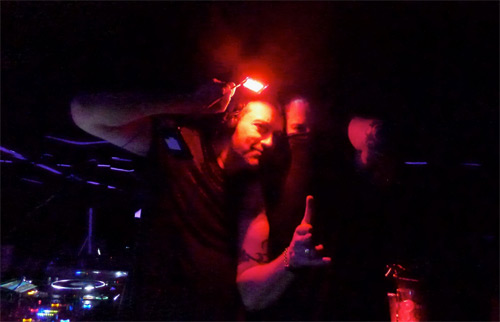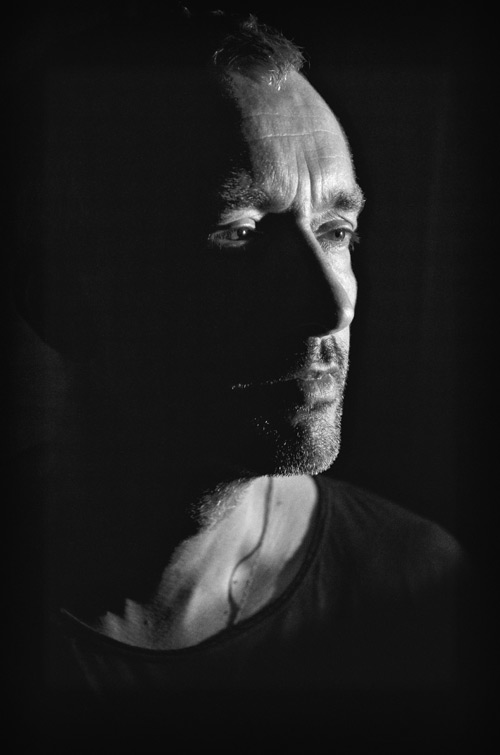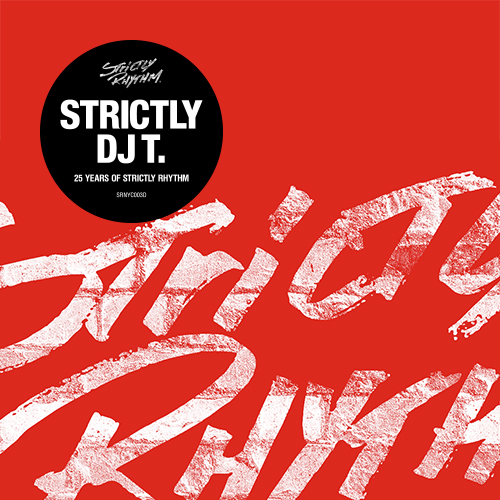Thomas Koch, AKA DJ T., has influenced the electronic music scene for well over 25 years now, and in a variety of guises and professions. Born in Dusseldorf, Germany, before relocating to Hamburg during the late Seventies, the nine-year-old Koch first discovered disco and then built upon that funky love with a keen interest in hi-NRG. Beyond that (and in order) came equally keen interests in early US rap, hip-hop and electro-funk. The body-boppin’ rush of beats was enough to encourage Koch’s first musical (and physical) steps - as a breakdancer.
The DJing quickly followed, Koch now labelling himself DJ T. and regularly playing private parties. It was strong momentum that would lead to his first DJ residency, at key Frankfurt club Music Hall. The city, by now, was under the spell of acid house and T.’s influences had widened further to include house, techno and EBM [Electronic Body Music] – genres marching across Europe at a relentless 4-4 clip. During the Nineties, an ever-versatile DJ T. secured further Frankfurt residencies at influential clubs Plastik, Dorian Gray and The Box, and helped confirm the city’s place (as well as his own) at global clubland’s top table.

Of course, Get Physical has driven much of T.’s impeccable discography. His debut track, ‘Monsterbaze’, appeared on Poker Flat in 2000 (a co-production with Poker Flat head Steve Bug), preceding weighty remixes and productions over a number of years on Moodmusic, 20:20 Vision and Get Physical sub-label Kindisch. For Get Physical, T. has generated something like 20 EPs, not least ‘Get Lost’ (2004), ‘Outbreak’ (2008), ‘City Life’ (featuring Cari Golden, 2011) and ‘Leavin’ Me’ (with Khan, 2011). And then there are his three albums, Boogie Playground (2005), The Inner Jukebox (2009) and The Pleasure Principle (2011) – the latter, a particularly soulful, e-Funked, twisting, turning joy.
Whilst productions have been scarce in T’s most recent years, the edits, remixes and gigs have continued to flow. And now T. is taking huge responsibility for a Strictly Rhythm 25th anniversary compilation – Strictly DJ T.: 25 Years Of Strictly Rhythm. No pressure then…
Let’s dive straight in then, tell us about your relationship with Strictly Rhythm:
My love affair began in 1990. Back then I was going through this transition period both as a DJ and club goer, from black music and broken beats to early electronic dance music and straight beats. 1990 was, as far as I can remember, the last year that I was still sometimes booked to play solely black music sets - hip hop, R&B, funk and soul, all together. From 1991 on, I started focusing on house and techno and on what was then called the ‘sound of Frankfurt‘. 1990 was also the year when I purchased my first Strictly record – ‘The Warning’ by Logic, which is one of the numerous pieces that the legendary Strictly co-founder Gladys Pizzaro worked on as an executive producer. From then on I listened to any Strictly release that I could get my hands on.
How did the new compilation come about?
I was given a free hand in choosing tracks for it. I didn’t actually feel any pressure; it was just a tremendous honour to be able to do this. Back in the day, when these tracks meant everything to me, if you had told me that in 20 years I would be able to take part in something like this, I would never have believed you.
You’ve ended up specially editing all 30 tracks, right?
At first I thought only around half of the tracks would be worth editing. My philosophy is to only edit when I feel I can really add value to the track. This time I wasn’t really that strict, because eventually I thought ‘oh come on, if there’ll only be two or three unedited tracks left on the whole tracklist, that will look silly’, so I gave the last ones a treatment too. All these old tracks don’t really have a mix-friendly intro and outro, they often just fade out or stop abruptly. It will now be easier to use these classics in contemporary sets. I enjoy editing a lot. Once I start I don’t want to stop. To be able to improve a track, so that it becomes interesting and playable for DJs nowadays again, all without changing its essence, that’s my motivation.
Let’s talk original productions – it’s been four years since your last album The Pleasure Principle...
That’s right, I’ve only released two new EPs since The Pleasure Principle. I was very busy working on five big compilations [including last year’s Body Language Vol 15 on Get Physical] and all the activities around my DJing anniversary [spearheaded by Get Physical compilation album 25 Years Of DJing], so I tried to concentrate on that. I also simply needed that time to find inspiration for my own stuff again.
Did you find it?
2014 was the year of changes, both privately and creatively. Change has always been present during the years before but in hindsight that was just a kind of prep for what was to come. Things really kicked off in 2014. At the beginning of the year, I had a life changing experience in the ‘Sacred Valley’ in the Peruvian mountains. I took part in a three-week program which is supposed to help detox and cleanse you in all ways. As a part of it I participated in some Ayahuasca ceremonies [rituals involving a local, organic psychedelic brew] for the first time. I’d wanted to do it for almost 10 years but I had to wait for the right time, I suppose.
Last summer I did it a second time in Holland. This medicine has become a kind of spiritual guide for me and I am about to reorganize my whole life…my career as a DJ and producer with its help. Creatively, the highlight last year was getting to meet young Frankfurt producer Emanuel Satie. I’m a huge fan of his productions. In him, I have found the perfect producer for my stuff; I mentor and advise him in return. As an external A&R of Get Physical I am taking care of his output on the label. We released his first one [EP ‘Gold’] last year and it became a huge success, and there are at least two more EPs to follow this year. It’s the perfect synergy. We have been working together on my new stuff for the past three or four months and are quite used to one another by now. Emanuel has just moved to Berlin, so we are going to look for a studio together, so that we can work together even more closely.
In terms of DJing, you’re busier than ever – how has the dancefloor changed over your career?
If you don’t want to give just a superficial answer, you’d have to tell the entire history of club music over the past 30 years. But I can pinpoint a few aspects of change like, for example, nowadays the style range that is being offered on a night at a club or during an event is substantially more limited than it used to be, obviously excluding festivals. The crowds used to be more heterogeneous in their looks as well as attitude. People are very uniform in their dancing these days. They used to be more individual, more expressive. Also the average time that one used to spend on the dancefloor without a break has decreased significantly over the years. Back in the day when I used to go to a club with friends, we started dancing at midnight and didn’t leave the dancefloor until 8am - five pounds lighter....
What’s your view on house music today? – with The Pleasure Principle you challenged the cult of minimalism….
The assessment of what is going on inside the boundaries of house depends on the individual definition and one’s willingness to expand those boundaries. For a lot of connoisseurs of what you would call classic deep house, Beatport and other genre charts have nothing to do with actual deep house anymore. That contributes to the fact that classic deep house loses its original form and visibility more and more. When the young generations say ‘deep house’, they mean only the new stuff and often don’t know anything about the history of this genre, but how can we blame them? Both of the approaches are justified in a way, but if you want to talk about what’s going on in house, first of all you have to make sure you know what even counts as house. I’m a big fan of what’s happening on the English market, returning and steering towards the elements of the old styles - mainly forms of garage but also Chicago house, techno and 1990s-rave attitude, and mixing of all these elements. At the moment, I think London is the best place to DJ for me, because my sound is so very connected to what’s going on in the UK.
Will house music ever run out of creative steam – does the genre have a shelf life?
Within the boundaries of superordinate genres like rock, dance and pop music, it is possible to divide the subgenres and movements into two groups. The first group consists of subgenres that have basically stood the test of time but whose foundations stay unaltered; those are always capable of further growth. All temporary movements that either die off abruptly, or become some unimportant aficionado niches, belong in the other group. I can see in which group music belongs way clearer the older I get - I turn to timeless music and try not to be influenced by what’s temporarily in fashion. Long story short, I think house is very much capable of renewal and there’s too much substance to this genre for it to ever disappear completely.
So can there be new Strictly Rhythms and Get Physicals in the future?
It’s impossible to compare the situation before with what’s happening now. Labels like Strictly have helped to create completely new genres - (deep) house wouldn’t have been what it was in the first half of the 1990s, had it not been for Strictly. That couldn’t happen today in the same way. There are still labels that manage to stir things up within their genre and inspire endless numbers of people but not usually for much longer than three or four years. Get Physical, the label I co-founded, went through such a phase between 2003 and 2007. Strictly Rhythm was in this position between 1989 and 1996.

You’ve been in electronic music for over 25 years now, what keeps you motivated?
When you’re in your twenties, all you really have to do is have faith in your abilities, let the creativity and madness flow and also have no regard for your health, energy levels and inspiration - it all somehow works itself out. It starts to change when you turn 30, and when you’re over 40 the change is quite significant. All of a sudden, you have to really invest in everything you’re doing, so that you can maintain your work flow. You’re able to organise your business better and to keep your balance physically and mentally, and at the same time manage to maintain a normal personal life. It has become a very conscious process and one has to decide every day all over again how much space to devote to these parts of your life. To me it’s more than ever the music and the DJing that drives me; the deep passion for it keeps me going. Without this passion, a life with so many restrictions to one’s private life wouldn’t be enjoyable.
Finally, back on Strictly – what’s your absolute favourite cut from the label and why?
If I have to choose one track that epitomizes everything I used to like about Strictly and what used to fascinate me about house in the early 1990s, then it’s ‘She's A Freak’ by U.P.I. For me those monster chord stabs are the key sound of the track, a kind of key stimulus that manages to prompt a whole universe of emotions and memories in just a few seconds. When the beats and the vocals are introduced I suddenly feel like I’m in a different world – the glamorous New York club scene of the late 1980s and early 1990s – a world that I only know from stories. I can see a surging and sweating mass of predominantly black dancers doing their ‘work out dance’…drag queens, hipsters and other characters dancing the nights away together in clubs like the Loft, Sound Factory and The Shelter, and at countless illegal warehouse parties. Every time I go to Berghain in Berlin I feel like I find a metamorphosis of the same kind of energy.
Words: Ben Lovett

Strictly DJ T.: 25 Years of Strictly Rhythm is out 08 March (4CD / Digital) on Strictly Rhythm - order from iTunes
Visit the DStore to shop the exclusive new range of Strictly Rhythm t-shirts and bundles



